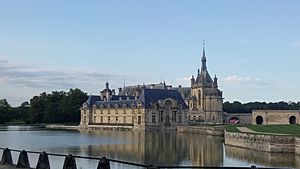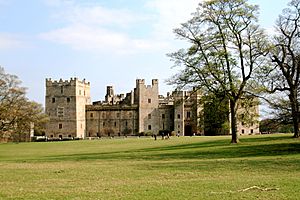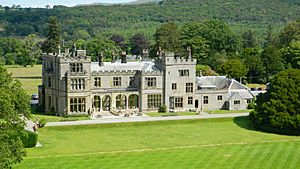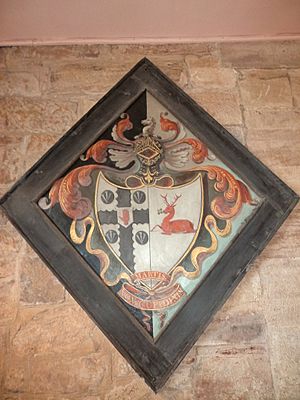Sir Frederick Fletcher-Vane, 2nd Baronet facts for kids
Quick facts for kids
Sir
Frederick Fletcher-Vane
|
|
|---|---|

Sir Frederick Fletcher-Vane by George Romney
|
|
| Born | 27 February 1760 |
| Died | 26 February 1832 (aged 71) |
| Relatives | Ancestor: Sir Henry Vane the Elder |
Sir Frederick Fletcher-Vane, 2nd Baronet (born February 27, 1760 – died February 26, 1832) was an important British politician and landowner. He held a special title called a Baronet. He was also a Member of Parliament (MP) for different areas in England.
Sir Frederick was known for his interesting personality. He joined exclusive clubs like Brooks's, where even the Prince of Wales was a member. He also joined the Whig Club, a group of politicians. Famous writers like Coleridge and Wordsworth even used his library at Hutton.
He was the second Baronet of Hutton. He was also a descendant of a famous ancestor, Sir Henry Vane the Elder. In 1788, he served as the High Sheriff of Cumberland, a local official responsible for law and order. Sir Frederick changed his family name to Fletcher-Vane in 1790.
Contents
Sir Frederick's Early Years and Adventures
Frederick Vane-Fletcher was born in Harrow on the Hill on February 27, 1760. He was the son of Sir Lionel Wright Vane-Fletcher, 1st Baronet, and Rachel Griffith. There are not many records about his early life or schooling. It is likely he was taught at home, which was common for people of his background back then.
In 1781, he joined the army as a young officer in the 7th Regiment Dragoons.
In 1787, Sir Frederick went on a "Grand Tour" of Europe. This was a common trip for young wealthy men to learn about art, history, and culture. His letters from France before the French Revolution describe beautiful places like Château de Chantilly. However, he also wrote about the many beggars and poor people he saw. This showed the big difference between the rich and the poor, which later led to the French Revolution.
A sad event happened in 1787 at Raby Castle. Sir Frederick's youngest brother, Henry, became very ill during a celebration and died shortly after.
Sir Frederick's Public Life and Politics
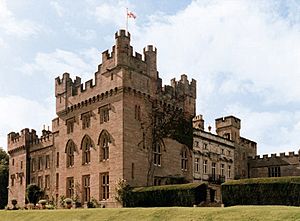
Sir Frederick became the High Sheriff of Cumberland in 1788. In 1790, he changed his last name to Fletcher-Vane. Around this time, a famous painter named George Romney painted his portrait.
When he was 31, Sir Frederick became a Member of Parliament (MP) for Winchelsea in 1792. Winchelsea was known as a "rotten borough." This meant it was a very small area with few voters, often controlled by one powerful family. These types of boroughs were later removed by the Great Reform Act of 1832.
In 1793, Sir Frederick helped organize horse races in Penrith. He also helped advertise a big dinner for the Cumberland Society in London. Many important people attended this event.
In 1794, Sir Frederick left Parliament. He then bought Armathwaite Hall in Cumberland in 1796. This was probably to create a better home for his young family. His family home, Hutton, was not in good condition at the time. Sir Frederick and his family spent a lot of time at Armathwaite.
His grandson, Sir Francis Fletcher-Vane, later described Armathwaite Hall as his grandfather's favorite house.
After moving to Armathwaite, Sir Frederick was elected MP for Carlisle in 1796. He joined a group that opposed the powerful Lowther family in politics. The Lowther family tried to control many parliamentary seats in the North West of England.
In 1796, Sir Frederick was invited to join Brooks's club by Charles James Fox, a famous politician. He also joined the Whig Club in 1797. In 1798, the poets Coleridge and Wordsworth used his library at Hutton.
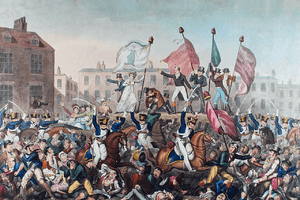
Sir Frederick was very against the Lowther family. In 1798, he even challenged Lord Lonsdale to a duel. They fought in Hyde Park and again in Bayswater, but a judge stopped the fight before anyone was seriously hurt.
Sir Frederick became MP for Winchelsea again in 1806 but left Parliament in 1807. In 1818, he tried to become MP for Cockermouth but did not win. This was part of a larger movement against the Lowther family.
In 1819, Sir Frederick spoke out about the Peterloo Massacre. This was a sad event where soldiers attacked peaceful protesters. Sir Frederick believed that Parliament needed to be reformed to prevent such events.
Sir Frederick's Family Life
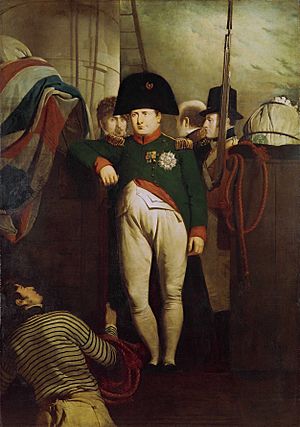

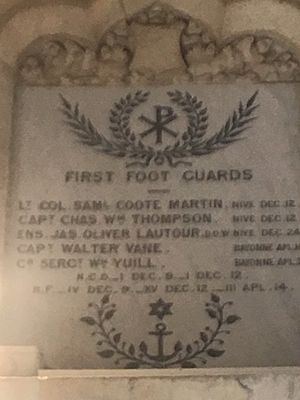

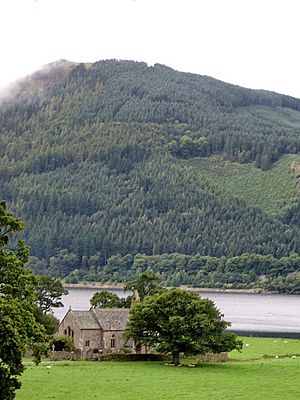
Sir Frederick had a relationship with Hannah Bowerbank, who was a companion to his mother. They had a daughter named Hannah in 1794 and a son named Walter Vane in 1795. Sir Frederick and Hannah lived together in Cumberland.
On March 9, 1797, Sir Frederick married Hannah Bowerbank in London. Their third child, Francis Fletcher Vane, was born shortly after. For several years, Sir Frederick and Lady Vane lived in Putney and other places near London.
Their first son, Walter Vane, went to famous schools like Eton and Charterhouse. In 1811, Walter joined the army as a lieutenant in the 1st Foot Guards. He fought in the Peninsular Wars in Spain and Portugal against Napoleon's forces. He became a captain in 1814.
Sadly, Walter was wounded during a battle at Bayonne on April 14, 1814, and died a few days later at the age of 19. He was buried in a military cemetery near Bayonne. Sir Frederick had a memorial made for Walter at St Bega's Church in Bassenthwaite, near their home.
It is interesting to note that another relative of the Bowerbank family, John Bowerbank, was a lieutenant on the ship HMS Bellerophon. This ship took Napoleon to his final exile on St Helena.
Sir Frederick and Lady Hannah had another daughter, Sophia Mercy Vane, born in 1802. She later married Reverend Forbes Smith in 1839.
Their youngest son, Frederick Henry Vane, was born in 1807 at Armathwaite Hall. He also went to Eton, where he was a classmate of the future Prime Minister, William Gladstone. Frederick was once punished along with many other boys for going to a fair without permission.
Frederick's son later told a story about a "battle" at Armathwaite Hall. Lord Egremont wanted to build a pier on the lake, but Sir Frederick did not want it. Sir Frederick's tenants and foresters quickly gathered and stopped Lord Egremont's workmen. Some of the workmen were even thrown into the lake! The pier was never built.
After Eton, Frederick joined the 12th Lancers army regiment. He later worked for the British government in Brazil and America. He died in 1894.
Sir Frederick's Estates and Hunting

Before his second son, Francis, got married in 1823, Sir Frederick arranged for his family's estates to be managed by a group of important politicians and lawyers. This was to make sure the family's property was secure for future generations.
Sir Frederick was also a keen hunter. He kept a pack of hunting dogs at his Wythop Estate. In 1829, he hired John Peel, a very famous huntsman. John Peel led Sir Frederick's dogs on one of the longest chases ever recorded, covering about 70 miles! After this amazing hunt, Sir Frederick had a portrait painted of John Peel.
Sir Frederick's Passing
Sir Frederick died on February 26, 1832. An American newspaper in 1873 described him as a "well-esteemed country gentleman" who enjoyed sports and social events.
He was buried at St Bega's Church in Bassenthwaite. His first daughter, Hannah, who died in 1854, was buried in the same family tomb. Lady Hannah Vane, Sir Frederick's wife, passed away in 1866 at the age of 93. She was also buried at St Bega's Church.


